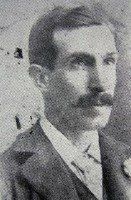
This piece was first written almost a decade ago. Since then it has been added to but the "Mystery" was never quite resolved. The original hung upon careful research but some speculation but time passes, new facts emerge and now I think it is fair to say the mystery is no more and pure satisfaction is the result. It is almost certain the Duncan McComish, Mexican footballing pioneer, who for a long while remained elusive was born in 1872 on Merrywell Brae in Kirriemuir, was married in 1898 in Orizaba, Mexico to Maria Moreno, had nine children with her and died in 1930 in Puebla de los Angeles still in Mexico. It is also clear that he did grow up in Dundee and now, who both his parents were. In December 1861 James McComish married Christina Rankin McDonald, he under the name McOmish, she as Christiana Rankine McDonell. Names then were still fluid. He was twenty-one year-old Railway Porter, as it turns out born in Crieff and, as a wee aside, in August that same year had been subject to a paternity claim against him from an Ann Tozet of Braco, she twenty-two. and a Housekeeper The wedding took place in Tradeston in Glasgow. They both gave their addresses as Denny. His father was a Forester, hers a Carpenter.
QED
